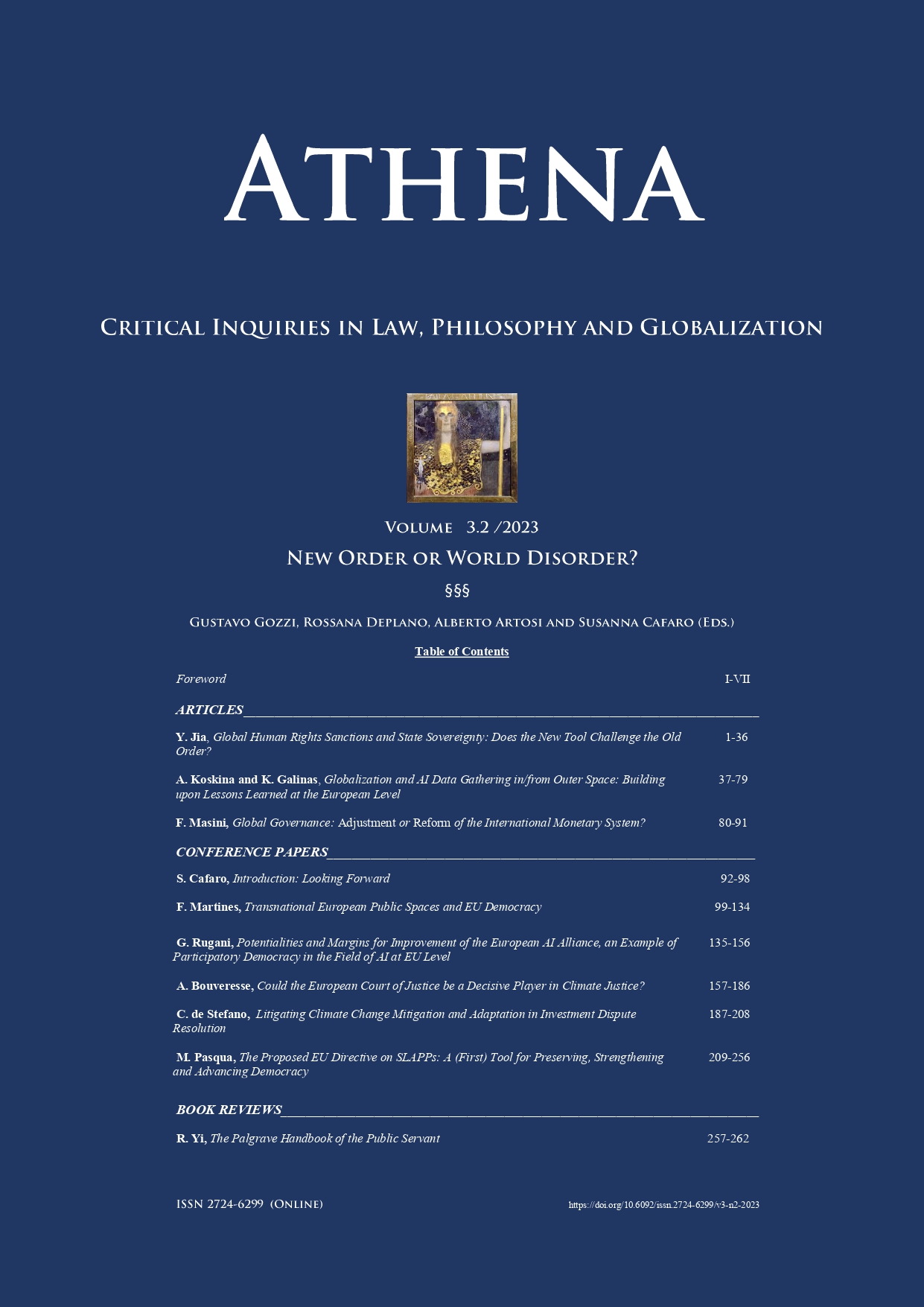Litigating Climate Change Mitigation and Adaptation in Investment Dispute Resolution
DOI:
https://doi.org/10.6092/issn.2724-6299/18168Keywords:
climate change, mitigation, adaptation, international investment law, international arbitrationAbstract
International investment agreements (IIAs) may protect in principle every kind of foreign direct investment (FDI), including “brown” and “green” FDI. This means that potentially polluting multinational enterprises may be protected by IIAs and benefit from the right to sue States for the enactment of measures adopted in furtherance of climate change action through investor-State dispute settlement (ISDS). While this is not preferable under a policy perspective, various legal techniques may provide important “entry points” through which the lex climatica – international climate change treaties, such as the United Nations Framework Convention on Climate Change (UNFCCC) of 9 May 1992 and the Paris Agreement of 12 December 2015, and implementing municipal laws – may be successfully integrated in the lex mercatoria – IIAs. Such techniques pertain to investment treaty drafting (recognition of the States’ right to regulate, general exceptions, express environmental carve-outs and provisions establishing investors’ commitments), procedural issues (jurisdictional requirements, admissibility filters and viability of States’ counterclaims) and substantive matters (treaty interpretation and applicable laws). Notably, IIAs must be interpreted pursuant to systemic integration as required by Article 31(3)(c) of the Vienna Convention on the Law of Treaties (VCLT) pursuant to which “any relevant rules of international law applicable in the relations between the parties” “shall be taken into account”. As a result, multilateral treaties addressing climate change do constitute an hermeneutic basis against which adjudicators may asses the breaches of economic treaties under international law. In this respect, the most relevant international instrument appears to be the Paris Agreement with its 196 States membership. The domestic implementation by States of their nationally determined contributions (NDCs) required periodically under Article 4 of the Paris Agreement may provide a parameter of legality of States’ climate change inaction, which would then result to be inconsistent with the applicable IIAs. The recent stipulation of multilateral commitments addressing climate change is relevant also under the lens of dispute resolution. In this respect, the “teeth” provided by IIAs and investor-State dispute settlement (ISDS) to implement the investors’ rights granted by the Parties may be instrumental also to the enforcement of climate change action commitments (in the absence of an arbitration or submission agreement pursuant to Article 24 of the Paris Agreement and Article 14 of the UNFCCC). In this scenario, ISDS may be resorted to by “green” investors to request an international investment tribunal or court to sanction a possible failure by a State in the implementation of binding climate change action.
Downloads
Downloads
Published
How to Cite
Issue
Section
License
Copyright (c) 2023 Carlo de Stefano

This work is licensed under a Creative Commons Attribution 4.0 International License.





